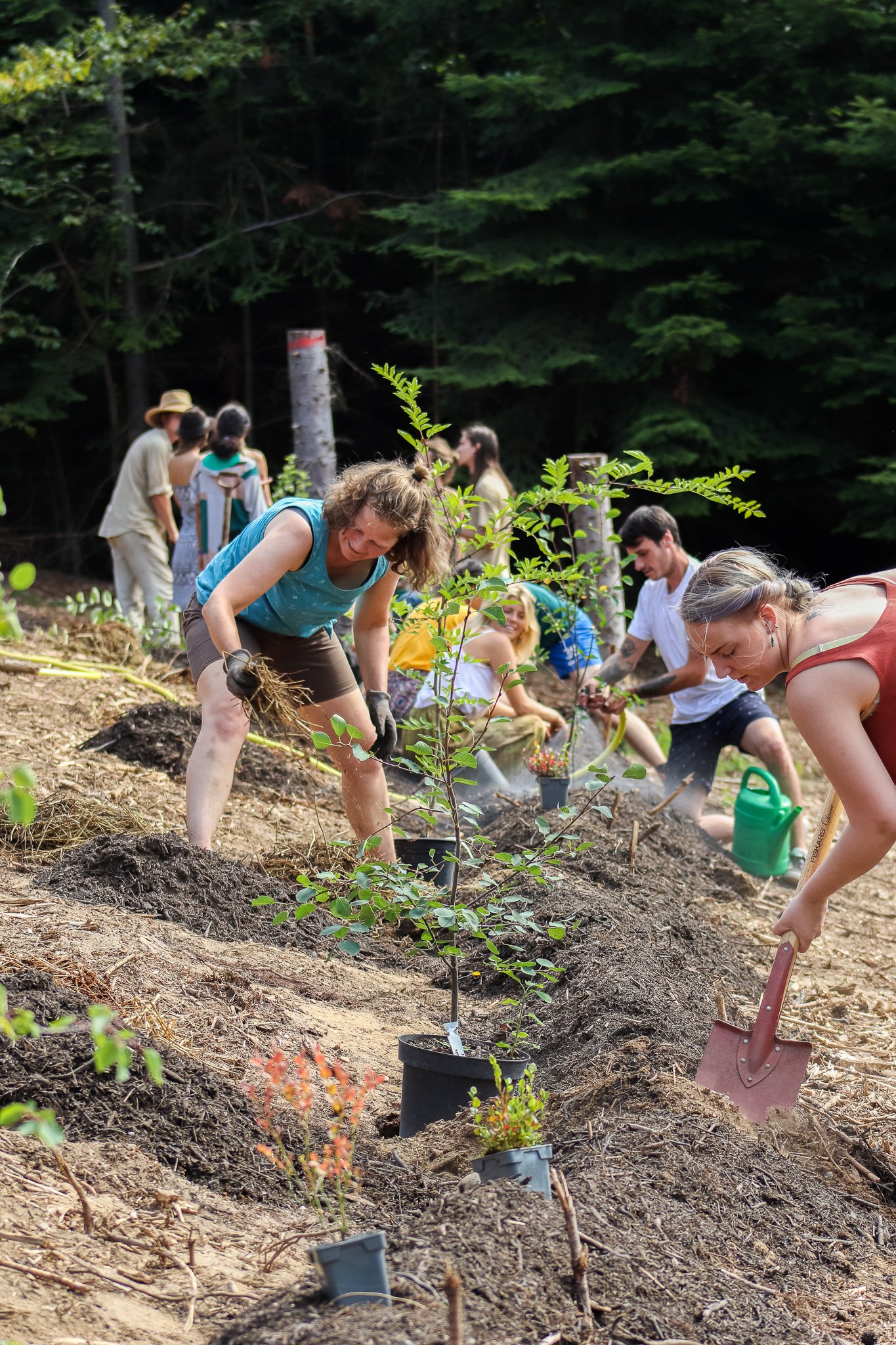Habitat Creation
Teacher: Karen Knudsen from Badass Biology
Learn how to create different habitats for insects and small mammals, by imitating natural processes in a manipulated system. Primarily we will be building a dead hedge, inviting species such as hedgehogs, wren, and solitary bees to move in.
We will also be discussing, and looking at examples of other possible habitats that you can create on your plot of land, such as beetle banks and rock piles.
Learn More
-
Despite its peculiar name, the dead hedge brings life to the ecosystem.
A Dead hedge is a conservation and habitat creation technique that involves building a barrier using dead plant material, such as branches, twigs, and other woody debris. These structures are typically constructed by piling and weaving these materials between stakes driven into the ground, creating a dense, impenetrable barrier.
-
Wildlife Habitat: They provide shelter and nesting sites for various wildlife, including birds, small mammals, insects, and other invertebrates. The dense structure offers protection from predators and harsh weather conditions.
Biodiversity: By creating microhabitats, dead hedges support biodiversity. Different layers and types of dead plant material can attract a wide range of species, promoting a healthy ecosystem.
Natural Fencing: Dead hedges can act as natural barriers to direct foot traffic, protect sensitive areas, and prevent soil erosion. They are often used in gardens, parks, and natural reserves as eco-friendly fencing options.
Decomposition: Over time, the dead plant material decomposes, enriching the soil with organic matter and nutrients. This process enhances soil health and fertility, benefiting the surrounding vegetation.
Aesthetic Appeal: Dead hedges can be visually appealing, adding a rustic, natural element to landscapes and gardens.
Overall, dead hedges are a sustainable and low-impact method for enhancing habitats, promoting biodiversity, and managing landscapes in an environmentally friendly way.
-
The goal of making a dead hedge project on land is to create a natural barrier that provides shelter and habitat for wildlife, enriches the soil as it decomposes, and enhances biodiversity while offering an eco-friendly fencing solution.
The goal is to attract a variety of wildlife, including birds, small mammals, insects, amphibians, reptiles, and pollinators, by providing shelter, nesting sites, and a rich habitat.
-
Getting your hands dirty!
Hands-On Learning: Gain practical experience in how to build a differant dead hedges, principles and techniques. You'll learn how to build and maintain a dead hedge, understand its ecological benefits, discover which wildlife it attracts, and find out the best locations for placement to support biodiversity and a healthy ecosystem.
Community Building: Connect with like-minded individuals who share a passion for sustainability and nature. Work together, share ideas, and build lasting relationships.
Fun and Rewarding Experience: Enjoy the satisfaction of seeing the forest garden grow and flourish. Participate in a meaningful project that benefits both people and the planet.
-
Yes absolutly, you can create a dead hedge at home, even in a small backyard.
At the end of the festival you will be provided by materials from which you can learn more on how to trasfer the knowladge and build your own small wildlife habitats.
About Karen
Karen is a biologist and co-owner of the company Badass Biology, alongside Christoffer. They facilitate guided nature trips, dissections, and host talks about the wonders of nature. With a deep passion for the natural world, Karen aims to inspire others to explore and appreciate the intricate beauty and complexity of our environment.
Explore the other Positive Trace Projects
-

Native Seed Collection
The workshop will focus on restoring an acient ecologial funtion of the grassland ecosystem. The dispersal of plant seeds over large distances carried out by large herbivores.
-

Hydrology
The purpose of the project will be to expand on the ecological space from the forest to the fields, by simulating forest clearings, providing food sources for pollinators, as well as to protect the field in case of harsh climate changes.
-

Forest Garden
Learn hands-on how to construct a forest garden based on Permaculture principles. The goal is to make resilient, low-maintenance systems that will be an example of “Use and value diversity” which you can implement in your own home.
-

Biodynamic Fall Veggie Garden
Learn how to start a fall veggie garden, where you will learn basic growing and compost-making skills based on biodynamic methods. Get ready for a day full of insight, understanding, and hands-on experience.




